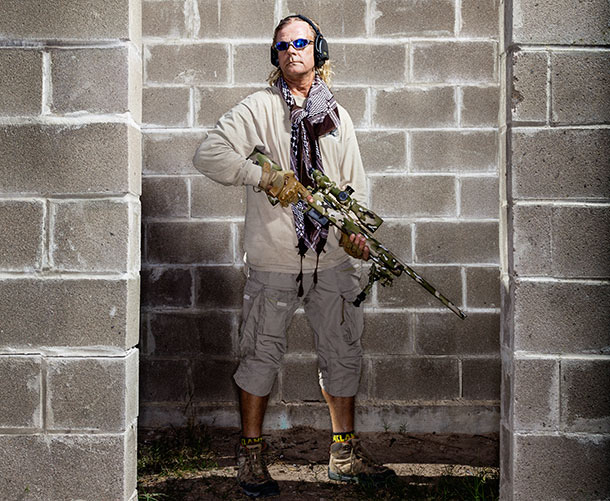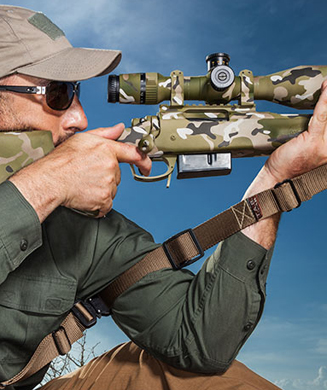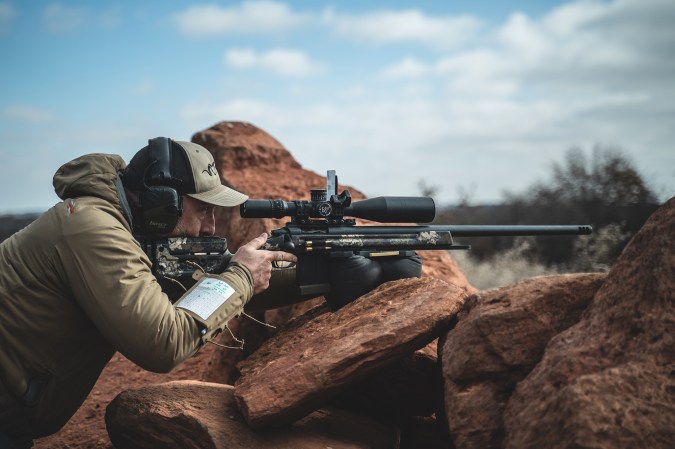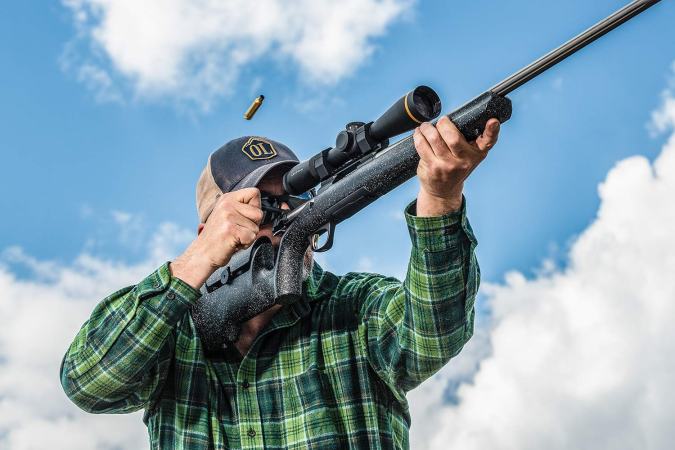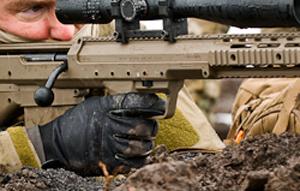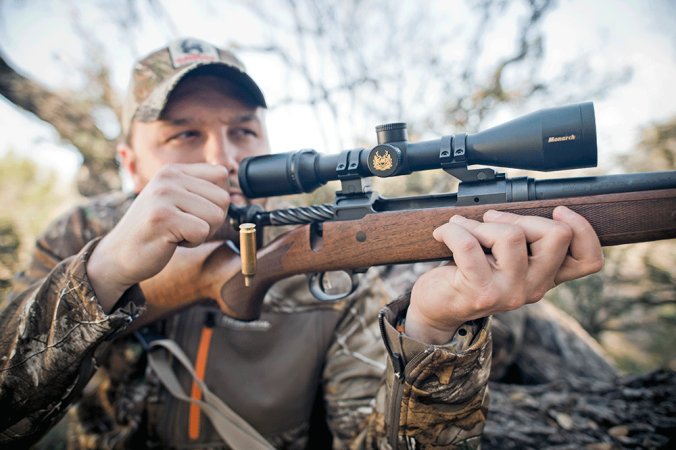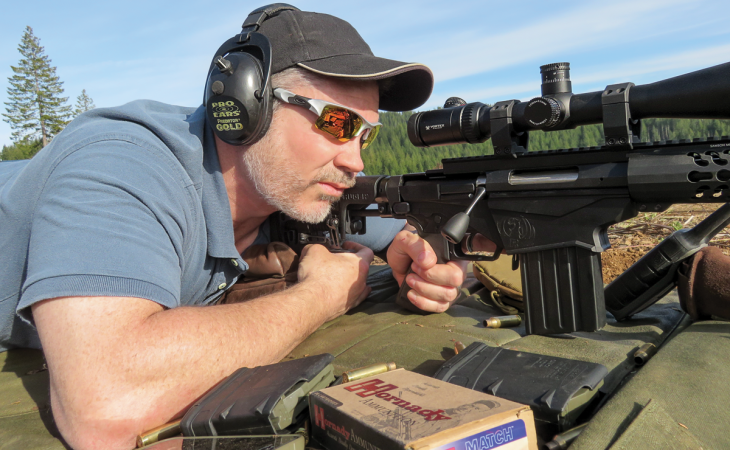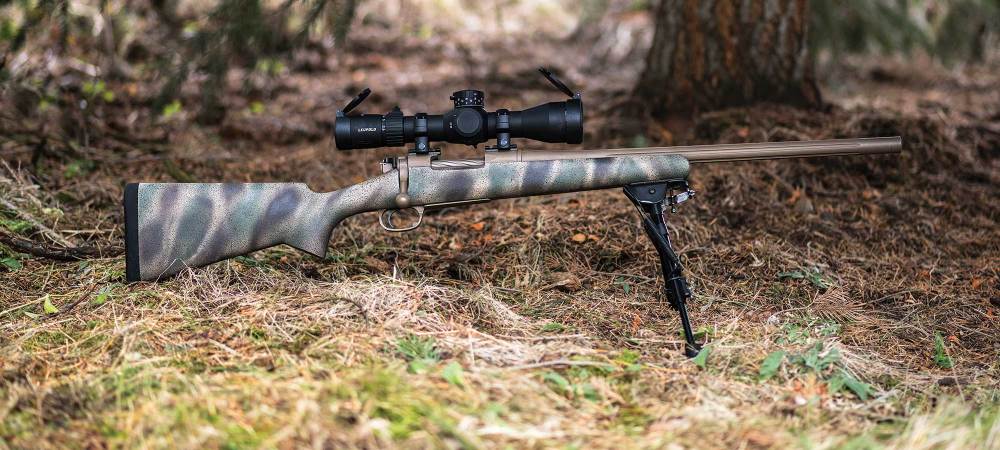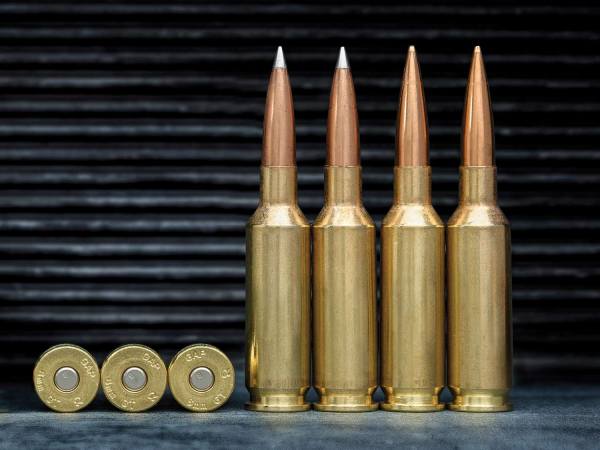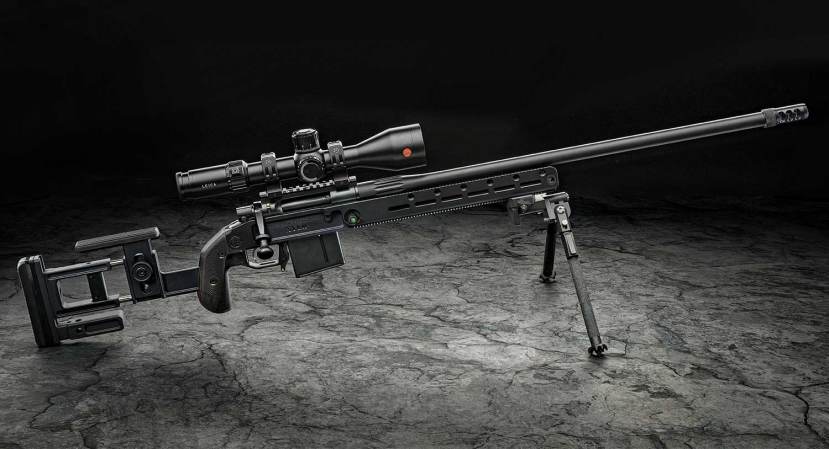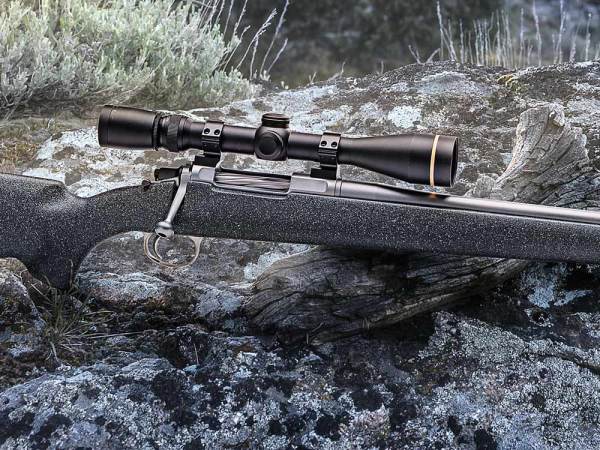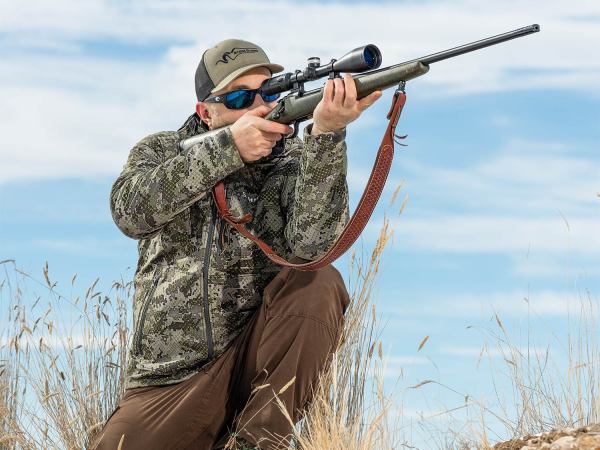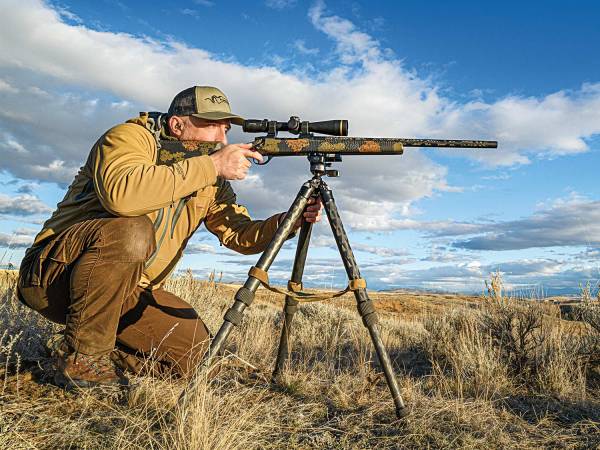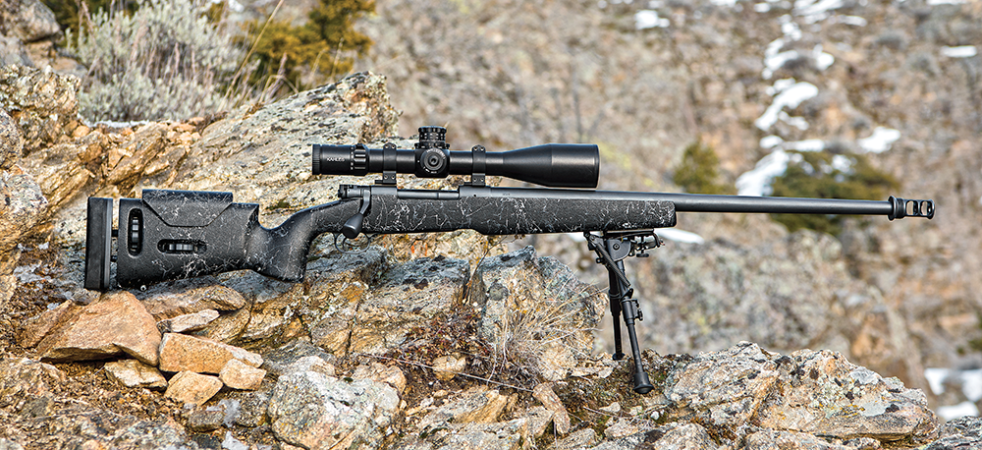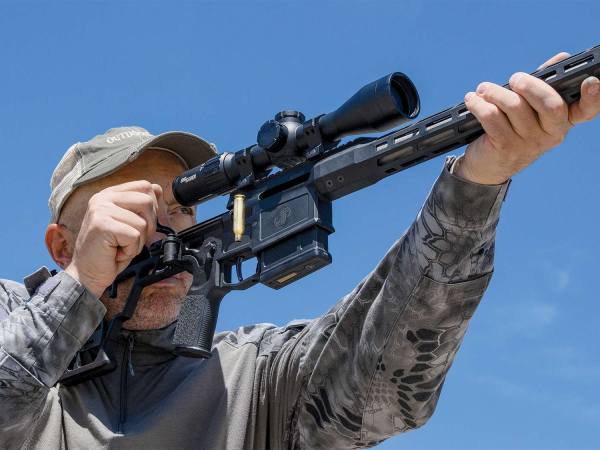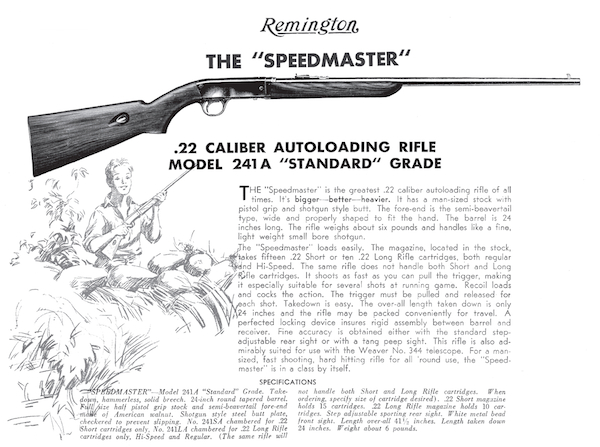We may earn revenue from the products available on this page and participate in affiliate programs. Learn More ›
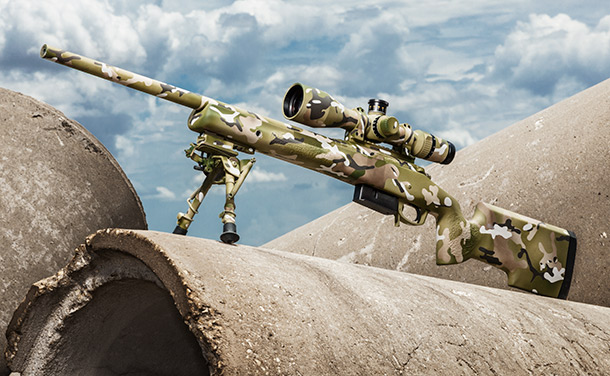
Things were not going well. I was prone on a mound of dirt, baking under the South Texas sun. It was hot, as only South Texas in the summer can be hot. The breeze offered no relief–with the mercury hovering at 103 degrees, a 10 mph wind is like a hair dryer blowing across your face. Plus, this wind was humid. Not pleasant at all.
I was staring at my rifle, silently asking it to work, but it wasn’t listening. Ants were crawling all over me. When I set up, I had been too busy trying to scratch out a trench in the dirt with my knife for the bipod to notice the ant holes. The trench hadn’t amounted to much, just a dusty line in the concrete earth. I couldn’t get it deep enough to properly support the legs. My shirt was soaked with sweat.
Even more unforgiving than the ground and the sun was Jacob Bynum, who was looking down at me through sunglasses. His hat had floppy wings to keep the sun off his neck, and because Jacob reminds me of The Dude from The Big Lebowski, the scene should have been funny. But his mouth was tight after I failed to complete the drill.
“What’s going on there?” he asked.
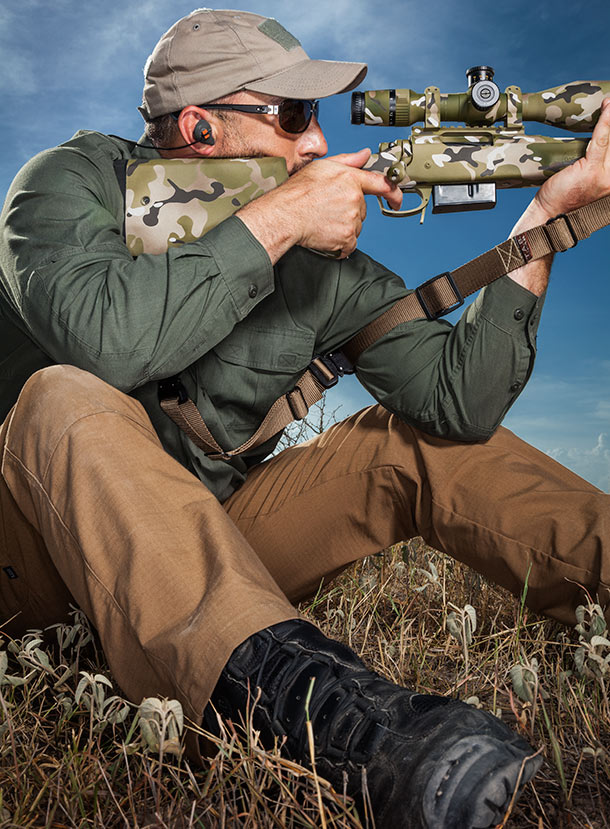
I told him that the .308 sniper rifle, which was on its maiden voyage, was fighting me, not feeding smoothly. The bolt was binding in the action, and the harder I ran the bolt, the worse it got. For this drill, I was trying to shoot a series of five 1-inch dots on a target 100 yards downrange in under 20 seconds. The shots I managed to get off were on target, but I couldn’t get the rounds chambered fast enough to shoot five times.
The rifle had first started acting up on the previous exercise. In that drill, I ran from one barricade to the next, using whatever support each station offered to brace the .308 and engage steel targets at distances from 250 to 400 yards. The last barricade was a section of an old hog wire fence. I had jammed the muzzle through one of the rusty metal squares, took a kneeling position, and held a few inches low because I knew the pressure on the barrel from the fence would push the shots high. The first bullet thwacked the metal silhouette, but I felt the bolt catch in the raceway as I went to reload. I had to double-pump the bolt to get a round in the chamber for each shot that followed.
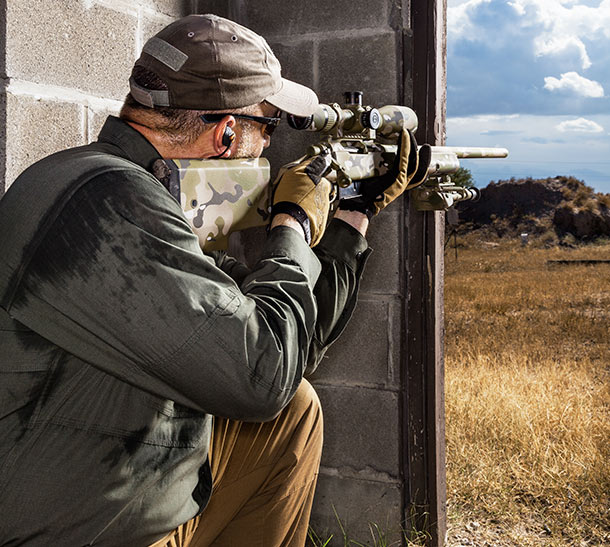
After the failed five-dot drill, Jacob asked to shoot the rifle. Grateful to get away from the ants, I moved aside and gave him a 10-round magazine that he emptied as fast as he could, though I could see he, too, was struggling with the bolt. As soon as the gun ran dry, he motioned for another magazine. And then another. And another. He put 40 rounds into a ragged hole on the paper, and although the accuracy was fine, the rifle was deteriorating. The bolt was grinding and sticking more with each shot.
I loaded it again, and Jacob and I talked for a minute about what might be causing the problem. We decided to take a break, and that’s when disaster struck. I went to unload the rifle and the bolt wouldn’t open. With a hard yank, I forced the bolt up and pulled it backward. The case separated from the bullet, which was stuck in the lands of the barrel, and gunpowder sprayed throughout the action, transforming the rifle into a 13-pound paperweight. Like the Titanic, it didn’t survive its maiden voyage.
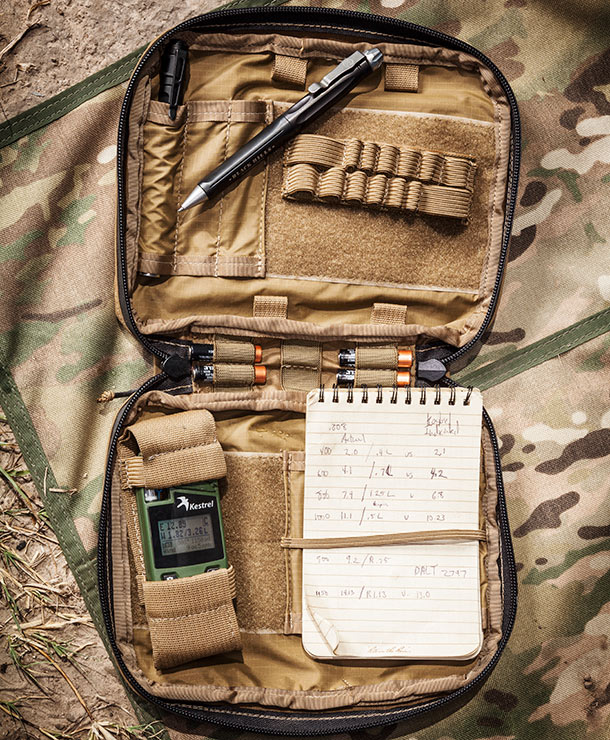
The Concept
A couple of years ago, I was talking with Wade Hull, who owns Shilen Rifles, about building a heavy-duty .308 for the tactical market. Shilen, in case you don’t know, has deep roots in competition shooting. It makes barrels for benchrest shooting and other sports that demand the utmost in accuracy. In 2009, Shilen started building complete rifles—hunting rigs for big game and varmints—for the first time since 1992. I saw this project as an opportunity to make a rifle that could compete in sniper and other dynamic long-range competitions where the firearms are subjected to rough treatment. This would be breaking new ground for Shilen, but Hull liked my idea and signed on.
Shilen builds its rifles on its DGR action, a Remington 700 clone with a two-lug design that features a floating bolt head and a Savage-style system for attaching the barrel to the action with a barrel nut. The floating bolt head and the barrel nut both enhance accuracy and actually cut manufacturing costs. It’s a proven system that didn’t seem to require any enhancements for this project.
In addition to being accurate, the system offers other advantages. The rifle can be outfitted with a new barrel, or rechambered to another caliber, quickly and easily and without much expense. With the barrel nut system, the barrel is moved flush against a chamber gauge that has been inserted into the closed action. The nut is then tightened down and the whole rig is perfectly headspaced. The system is so easy, the joke goes, even a gunsmith can do it.
Old-School Build
We looked at different stock makers and approached Tom Manners of Manners Composite Stocks. His lightweight stocks are strong and finished to high standards. We opted for the MCS-T4, which has a fixed length of pull, a vertical pistol grip, and a hook at the base of the buttstock that can be used to snug the rifle into the shoulder with the off hand or support a rear squeeze bag.
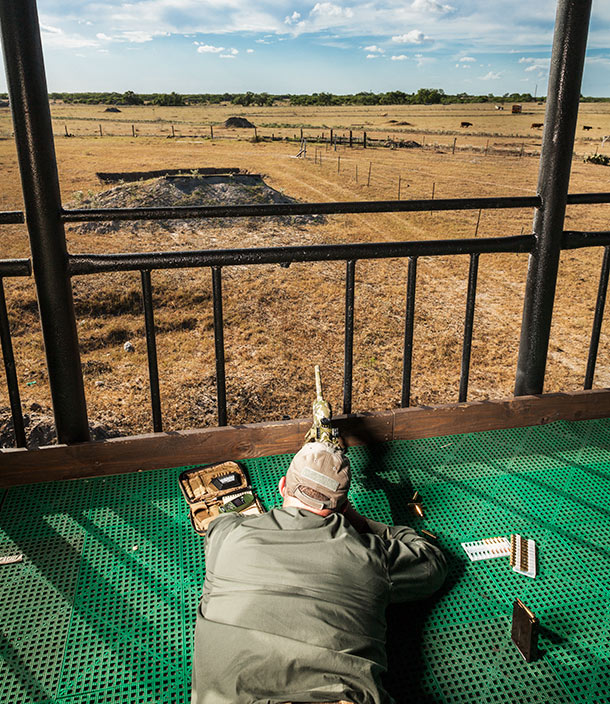
We also turned to Bynum at this point, a guru of the long gun who owns and operates Rifles Only, a training facility near Kingsville, Texas, that is used by law enforcement and military shooters as well as civilians.
With Jacob’s input, we configured the Shilen .308 with a minimalist philosophy. We didn’t festoon it with rails and other “tacticool” add-ons. The muzzle is cut with a target crown, with no flash hider, muzzle brake, or suppressor extending off the barrel. The dimensions of the stock are fixed. We used Badger Ordnance bottom metal and AI magazines, both well-known for their reliability, and added an inclined rail to the action that gave us 20 MOA of elevation for the scope.
In keeping with the old-school zeitgeist, I topped the rifle with a Hensoldt 4-16×56 scope. It has a plain mil-dot reticle with a ranging scale in the first focal plane and crystal-clear optics, and it’s built on a stout 34mm tube with turret knobs that are sealed against the elements. It weighs about 2 pounds, is more compact than most other scopes in its class, and is built for hard use. Which is exactly what we intended to put the rifle and scope through at Jacob’s school.
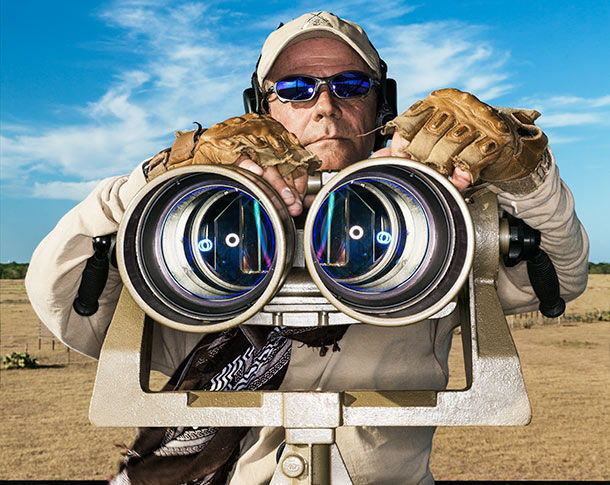
In For Repairs
After the rifle broke down, Bynum and I called Hull to deliver the bad news. He listened to our account and asked some questions, and then we sent the rifle back to his shop.
“I knew going into this there was going to be a learning curve. I mistakenly, or perhaps arrogantly, thought I had the action and barrel part down,” Hull said. “I thought the stock and trigger were going to be the obstacles. But the barrel was the area where we had the most to learn. I learned that what works for benchrest shooters doesn’t work for tactical shooters.”
The first problem was the chamber dimensions. When Hull chambered the rifle, he used a throat reamer that kept the freebore to a minimum and was specifically sized for the 168-grain Federal Gold Medal Match .308 ammo. This is a common technique in benchrest, where it is considered desirable to have the bullet resting against the lands of the rifling.
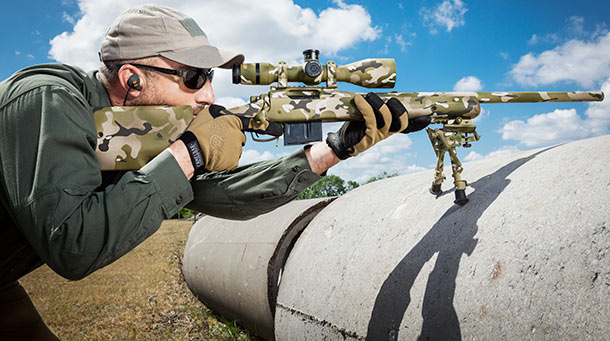
But this tight fit leaves no wiggle room. And when a rifle gets hot–as it did when Bynum ran those 40 rounds through it in the South Texas heat–the chamber will swell and constrict the cartridge, which is why the bullet got stuck in the bore. Although embarrassing for a target shooter, this could ruin a hunt for a sportsman or, worse, result in tragedy for law enforcement or military personnel.
It didn’t take much to fix this. Simply deepening the throat by .0015 inch to create a standard .308 throat length provided adequate room for the cartridge.
The galling on the action was another matter. The metal on the bolt was too soft, an issue you’d never notice when using the rifle for hunting or regular shooting chores, but which became manifest during the abuse we were dishing out. To address this, Hull treated the bolt with a process called “salt bath nitriding.” The bolt was heated to somewhere around 800 degrees Fahrenheit and then exposed to chemicals that created a tough, hard coating on its surface. Once completed, the outer .0012 inch of the metal on the bolt went from 38 to 70 on the Rockwell C scale, which made all the difference. In everyday terms, the steel went from the hardness you might find in a good garden tool to the hardness of a high-quality chisel. (Incidentally, Shilen now uses this process on all its bolts.)
During the hiatus, we also modified the stock, adding flush-mounted cups at the 3, 6, and 9 o’clock positions on both the buttstock and the forend to make the rifle easy to configure for various styles of sling use and carry.
Final Exam
Once I got the gun back from Hull, I put a couple hundred rounds through it at my local range without any problems. At that point I sent it off to Jeromy Holmes, who operates Dimensions by Holmes, (kustomcamo.com) in St. George, Utah, to get its multicam finish applied before returning to Rifles Only.
The temperatures this time were a little more forgiving–upper 90s instead of 100s–but the course of fire we planned to shoot was not. Bynum and I abused and evaluated the rifle for two days. As before, we shot on the move from barricades, and spent a lot of time on the tower in the center of his property performing various drills and engaging targets out to 1,000 yards. The action ran flawlessly, and, as it turned out, loosening the specs on the chamber hadn’t compromised accuracy in the least.
On the afternoon of the second day, Bynum decided to run the rifle through the mousetrap–a multi-level obstacle with several shooting ports. When the timer goes off, the shooter races to get into the first position, fires two shots at a moving target 75 yards downrange, unloads the rifle, tosses it to the next level, climbs up after the rifle, reloads, and puts another two shots on target. He repeats this four more times, moving up, down, and sideways through the mousetrap, loading, shooting, and unloading while beating the hell out of himself and the rifle.
Even when the mousetrap is run without a hitch, it is a grueling test for both the shooter and his gear. But what happened during Bynum’s run with the Shilen took it to a whole other level.
I was standing behind Bynum, watching him maneuver through the trap. He ascended to the top of the structure and put his final two shots from that level downrange. As he went to climb down to the second story, his foot slipped. The rifle flew from his grasp, and both he and the .308 tumbled down the structure. Bynum landed on a two-by-four, hurting himself badly. Meanwhile, the Shilen cartwheeled to the ground, taking the full impact of the 12-foot drop as it hit the rock-hard earth.
While Bynum’s wife took him to the hospital, I stayed behind to lock up. Before the sun set, however, I took the rifle back out to the tower. I needed to know if it could still shoot. I went prone, dialed in my 600-yard dope, and took aim at a gray target shimmering in the mirage. I shot and hit. Then I shot some more, every round ringing steel in the evening light.
I called Bynum at the hospital and learned he had broken three ribs in the fall. He didn’t want to talk about that, though. He wanted to know about the rifle. I told him it was none the worse for wear, and that it had held zero.
“We’ve got to call Wade,” he said, the strain of breathing evident in his voice. “That rifle’s ready for prime time.”
